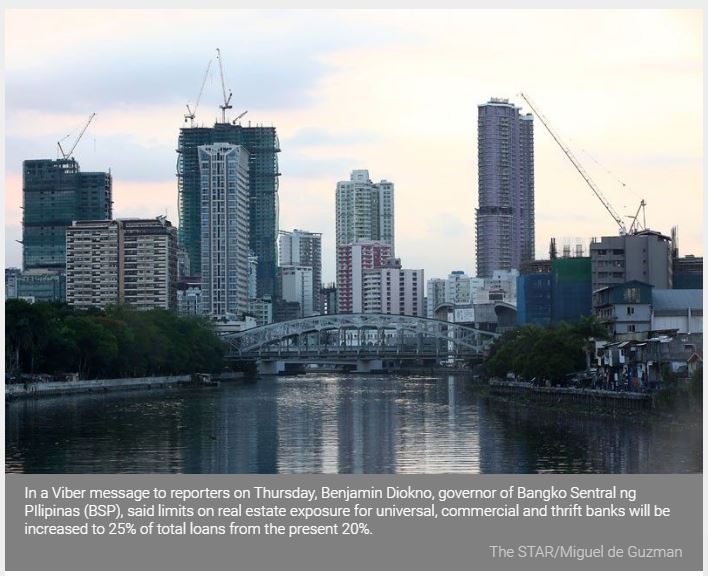Philippines: BSP allows banks to extend more home loans
MANILA, Philippines — The central bank is allowing banks to lend more funds to the property sector, another step meant to give banks more firepower to lend, this time to one of the Philippines’ booming sectors, but seen unlikely to spur demand for loans.
In a Viber message to reporters on Thursday, Benjamin Diokno, governor of Bangko Sentral ng PIlipinas (BSP), said limits on real estate exposure for universal, commercial and thrift banks will be increased to 25% of total loans from the present 20%.
The decision, reached by the seven-member Monetary Board during their ongoing meeting, means banks will be able to allocate more resources to home loans. Easily, Diokno said the move “translates to additional liquidity for real estate lending amounting to around P1.2 trillion.”
“The measure aims to support growth in productive sectors of the economy amid the COVID-19 situation, including real estate activities,” BSP said in a statement. “It also encourages bank lending to households for the acquisition or construction of a residential real estate property.”
But analysts question whether the latest move by the central bank will make any difference to what appears to be slowing lending activities of banks. “It’s looking more like a demand problem than a supply problem,” Nicholas Antonio Mapa, senior economist at ING Bank in Manila, said in an online exchange.
Property consultants, however, have a different opinion. “The additional liquidity should further entice potential investors and end-users given the attractive payment terms already offered by developers,” Joey Roi Bondoc, senior research manager at Colliers International Philippines, said.
“Definitely, this will stoke the condominium market,” he added. BSP data showed bank lending of big banks went up at their slowest pace since October 2019.
Tight watch on property market
The latest decision meant BSP is easing one of its most stringent macroprudential measures meant to prevent a repeat of real estate collapse during the 1997 Asian financial crisis. At the time, the weakened peso resulted in the collapse of property prices, leaving lenders mired in bad debts when clients severely affected by the crisis defaulted in their mortgages.
The cap was further tightened in 2013 when BSP, in the computing the exposure, included bank credit that may not have directly funded home purchases but funneled as debt to property firms.
Relaxing the real estate limit reflects confidence from the central bank which has persistently denied concerns of skyrocketing property prices getting unsustainable as borrowers binged on debt that they may not able to settle, especially with pandemic triggering job layoffs.
As of end-2019, banks, including rural lenders, have extended P2.17 trillion in real estate loans, accounting for 19.84% of total loan portfolio. Of this amount, 1.72% were considered soured loans or those unpaid 30 days after due date.
Under new guidelines governing property lending, banks will be required to demonstrate they have sufficient capital under stress tests that will write off 25% of their existing real estate loans, excluding credit that funded homes for occupancy and foreclosed properties.
For Emilio Neri Jr., lead economist at Bank of the Philippine Islands, hiking real estate exposure is actually meant to assist lenders cope with a potential rise in unpaid loans. “I suspect BSP is increasing the limit in case some clients have to increase collateral,” he said in an online exchange.
“If some clients aren’t able to pay and have to give up collateral, banks will end up with more property assets. Some banks may (breach) the smaller 20% limit if this happens,” he explained.
Source: https://www.philstar.com/business/2020/08/20/2036692/bsp-allows-banks-extend-more-home-loans


 Thailand
Thailand




